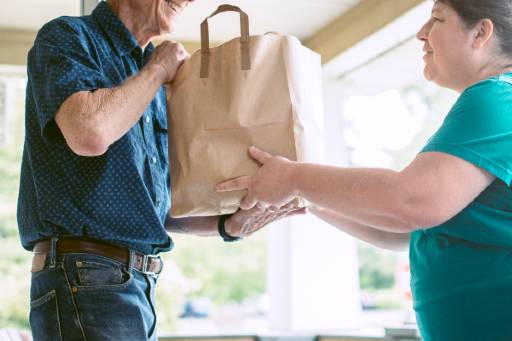
What Does Assisted Living Provide?
Understanding the difference between independent living and skilled nursing is fairly straightforward: Independent living is for older adults who need no help living on their own, while skilled nursing is for older adults who need a high level of constant short- or long-term professional care.
But what if an older adult is somewhere in the middle – needing help with activities of daily living to stay as independent as possible? That’s assisted living. And understanding what assisted living provides to older adults is vital to family members looking for the right level of living for their loved one.
So what does assisted living provide? And how do you know it’s right for you or someone you love? First, we’ll dive deeper into what assisted living provides to a typical resident, then we’ll help you determine whether it’s the right fit for your needs. We’ll also give you some pointers on what to look for once you start your search.


What Does Assisted Living Provide? Living!
Typically, assisted living communities offer many of the same services, amenities and high quality of life as their independent living counterparts – private residence, dining plan, security, numerous common spaces such as a library and outdoor gardens, full-time staff members who are responsible for maintenance, laundry and housekeeping, and a calendar of activities to encourage residents to keep their minds sharp and their bodies moving. You might also find other common extras, including:- Chef-inspired meals in multiple dining spaces
- A bar and cafe with outdoor patio
- Arts and crafts room
- Game room
- Fitness center
- Salon and barber services
- Social activities and cultural events

Support and Personalized Assistance
In addition to many of the above features, assisted living also provides residents with a higher level of support and personalized assistance. Generally, the type and amount of help is determined when the resident first moves in, through an assessment performed by a trained team member. Typically, assisted living provides help with Activities of Daily Living (ADL). These ADLs are:- Hygiene – Showering or bathing, brushing teeth, shaving, trimming nails, combing hair
- Dressing – Putting on undergarments, clothing, socks and shoes; managing buttons or zippers
- Transferring – Rising from bed, standing up, sitting down or moving from a bed to a chair, walking from one place to another
- Toileting – Sitting on and rising from the toilet, cleaning afterward and washing hands
- Continence – Controlling bladder and bowel functions, or self-managing incontinence
- Feeding – Getting food from plate to mouth

How Do I Know it’s Time for Assisted Living?
That’s a great question, and the answer is different for every person. Fortunately, there are some telltale signs to look for: Isolation: Humans are social creatures; we need to stay connected with others. Isolation can lead to depression, anxiety, and a host of other negative health consequences. Are you noticing your loved one withdrawing from hobbies or social interactions with friends and family? Are they staying home instead of going out to meet friends? Do they live alone? Increasing frailty or weight loss: Maybe your loved one is struggling to maneuver around their house, or they’re falling more often. Or they’re losing weight because they aren’t eating a proper diet, or find it difficult to prepare meals for themselves. They may have developed a new health issue and can’t drive themselves to the doctor or pick up medication. A messy house or disheveled appearance: Clutter around the house, dishes in the sink, dirty laundry, garbage piling up, an unmowed lawn – all signs your loved one can’t keep up with the physical demands of maintaining their environment. And if they’re wearing stained clothing or increasingly have poor hygiene, it could mean they’re unable to perform critical daily tasks. These are just three signs – you may also notice things like your loved one missing appointments, neglecting to pay bills, or forgetting to toss out rotten or expired food in the fridge. This can also be a sign it’s time to look into assisted living. But how do you know what to look for in an assisted living community?Your Visit Checklist
First, ask friends, co-workers and your loved one’s doctors which communities to check out. Research them on the web. Start narrowing down by the type of residence you’re seeking and the services and amenities you need. Then schedule a visit – and pay attention to the details, such as:- Are there pull cords or call buttons in the residence?
- Is the staff friendly and attentive?
- Is the environment clean and well lit?
- Are residents out, about and engaged? Are they taking part in activities?
- Try a meal there – is the food good? Are people socializing while they eat?
- Is transportation available?
- What does the calendar of events look like?

